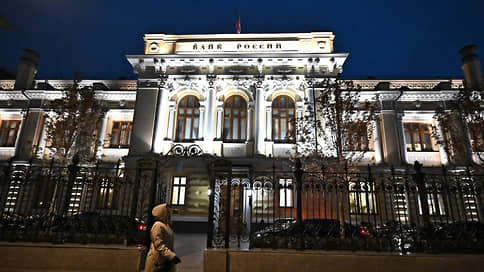The Central Bank is thinking about maintaining a tight monetary policy to cool demand
[ad_1]

Maintaining high consumer demand will require maintaining a tight monetary policy for a long time, as follows from the review “What Trends Are Saying” by the Central Bank of the Russian Federation. The regulator records the economy’s adaptation to high nominal rates, noting that the slowdown in lending is not yet sustainable – in particular, the growth in loans to individuals in January was comparable to December against the backdrop of a shortage of personnel in the labor market and rising incomes of borrowers. Leading indicators point to an increase in consumer spending in February.
Even in the context of high lending rates, consumer activity in the Russian Federation remains strong due to continued income growth in the face of intense competition for workers, according to the bulletin of the Department of Research and Forecasting of the Central Bank, “What Trends Are Saying.” The increase in consumption and spending, in turn, continues to outpace the growth in household savings. From this, the DIP concludes that “the disinflation process may be more extended over time, all other things being equal” – this will require maintaining a tight monetary policy for a long time and in conditions of decreasing inflation (which may also be expressed in a rate reduction).
The impact of a high rate on economic growth is still ambiguous: in January-February, according to leading indicators, it accelerated after some slowdown in November-December – but statistically this will become noticeable in the dynamics of the second quarter, the Central Bank expects. The Russian economy has adapted to high nominal rates, which was previously observed only during periods of high inflation, the regulator records. Possible reasons include increased inflation expectations, as well as continued high lending rates (against the backdrop of rising borrower incomes, weakening non-price conditions and the preservation of preferential programs) and positive fiscal impulse. The Central Bank does not rule out increasing the potential level of GDP by adapting companies to shocks (in particular, increasing production efficiency in response to a shortage of personnel).
Lending dynamics are still slowing down compared to the autumn pace, but the trend, according to the Central Bank, is not yet sustainable – in particular, the growth in lending to individuals in January was comparable to December, and the growth of unsecured consumer loans even accelerated (from 0.8% to 1.3% adjusted for seasonality). Car loans are growing against the background of increasing demand for cars and the preservation of benefits, while in the mortgage segment there is a “noticeable cooling” after the tightening of conditions under the preferential mortgage program. The growth of corporate ruble loans slowed in January to 1.3% from 1.7% in December (seasonally adjusted) – but this was caused not only by an increase in rates, but also by a shift in part of payments under government contracts from the end to the beginning of the year, which reduced demand for working capital.
At the same time, the inflow of funds into deposits remains high (2.6% in January versus 2.8% in December), and after the last meeting of the Central Bank, implied inflation (calculated based on OFZ yields) over a four-year horizon decreased from 6.9% to 6.6%, nine years – from 7.2% to 6.9%. In the context of the expected increase in the budget contribution to the growth of the money supply (taking into account budget projections for 2024), its slowdown should ensure a slowdown in lending growth to a more moderate level, the Central Bank believes.
Note that according to Sberindex (spending on Sberbank cards), consumer spending in February continued to grow significantly – by 0.4% compared to January, taking into account seasonality (January growth rates were recalculated from 0.6% to 5%). Rosstat data showed similar dynamics in January 2024 (see Kommersant on February 29), and analysts on the MMI Telegram channel estimated the growth rate of the indicator in January to December 2023, taking into account seasonality, at 5.7%. “This is a surprise not only for us, but, apparently, also for the Central Bank, which predicted real household spending this year (minus 1) – 0.0%. It appears that income growth is so strong that households can increase both savings and spending,” they conclude, noting that such spending dynamics are a strong argument in favor of continuing tight monetary policy, and perhaps even further rate hikes.
[ad_2]
Source link






